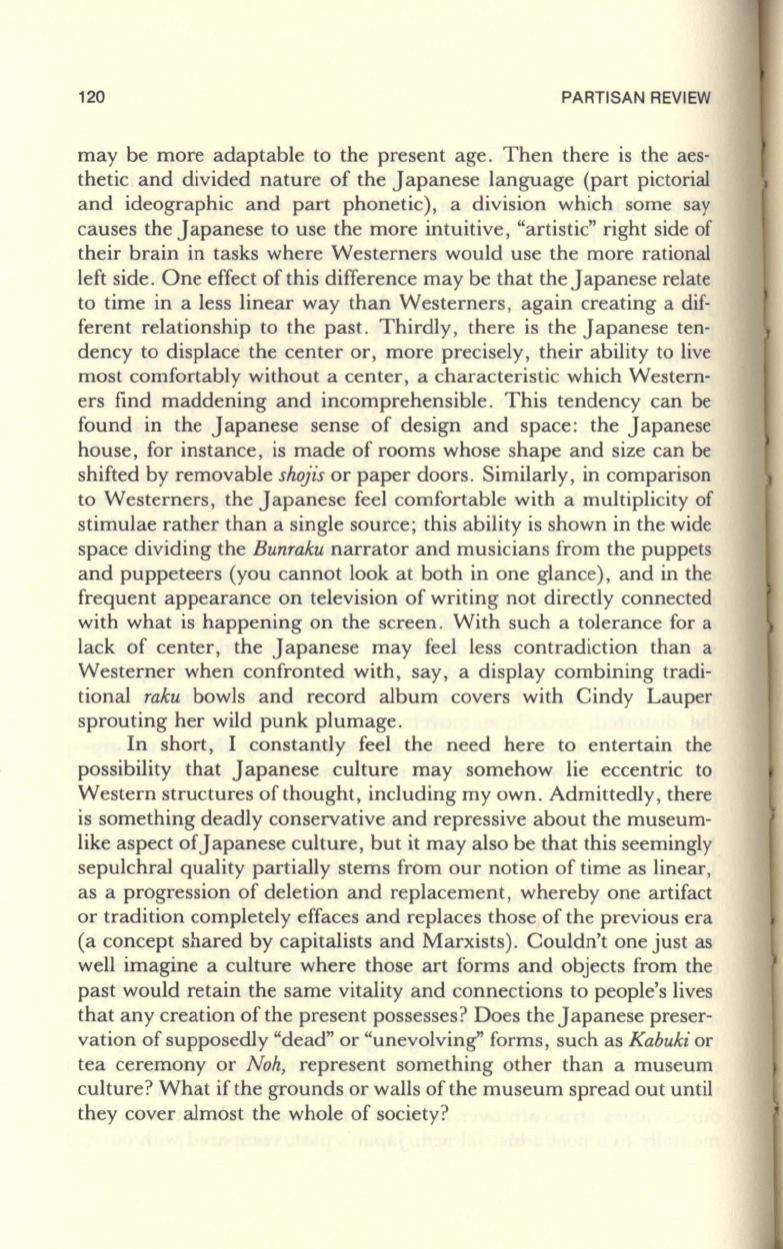
120
PARTISAN REVIEW
may be more adaptable to the present age. Then there is the aes–
thetic and divided nature of the Japanese language (part pictorial
and ideographic and part phonetic), a division which some say
causes the Japanese to use the more intuitive, "artistic" right side of
their brain in tasks where Westerners would use the more rational
left side. One effect of this difference may be that the Japanese relate
to time in a less linear way than Westerners, again creating a dif–
ferent relationship to the past. Thirdly, there is the Japanese ten–
dency to displace the center or, more precisely, their ability to live
most comfortably without a center, a characteristic which Western–
ers find maddening and incomprehensible. This tendency can
be
found in the Japanese sense of design and space: the Japanese
house, for instance, is made of rooms whose shape and size can be
shifted by removable
shojis
or paper doors. Similarly, in comparison
to Westerners, the Japanese feel comfortable with a multiplicity of
stimulae rather than a single source; this ability is shown in the wide
space dividing the
Bunraku
narrator and musicians from the puppets
and puppeteers (you cannot look at both in one glance), and in the
frequent appearance on television of writing not directly connected
with what is happening on the screen . With such a tolerance for a
lack of center, the Japanese may feel less contradiction than a
Westerner when confronted with, say, a display combining tradi–
tional
raku
bowls and record album covers with Cindy Lauper
sprouting her wild punk plumage.
In short, I constantly feel the need here to entertain the
possibility that Japanese culture may somehow lie eccentric to
Western structures of thought, including my own. Admittedly , there
is something deadly conservative and repressive about the museum–
like aspect ofJapanese culture, but it may also be that this seemingly
sepulchral quality partially stems from our notion of time as linear,
as a progression of deletion and replacement, whereby one artifact
or tradition completely effaces and replaces those of the previous era
(a concept shared by capitalists and Marxists). Couldn't one just as
well imagine a culture where those art forms and objects from the
past would retain the same vitality and connections to people's lives
that any creation of the present possesses? Does the Japanese preser–
vation of supposedly "dead" or "unevolving" forms, such as
Kabuki
or
tea ceremony or
Noh,
represent something other than a museum
culture? What if the grounds or walls of the museum spread out until
they cover almost the whole of society?


